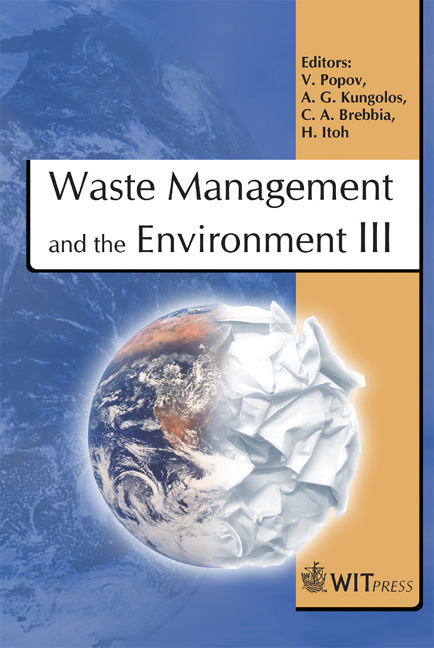Recycling Of Poly Lactic Acid Into Lactic Acid With High Temperature And High Pressure Water
Price
Free (open access)
Transaction
Volume
92
Pages
9
Published
2006
Size
384 kb
Paper DOI
10.2495/WM060251
Copyright
WIT Press
Author(s)
M. Faisal1, T. Saeki, H. Tsuji, H. Daimon & K. Fujie
Abstract
The converting of poly L-lactic acid into its monomer (lactic acid) was performed using high temperature and high pressure water at the temperature range of 250-350°C and for a period of 30 minutes. The results show that temperature and reaction time affected the recycling efficiency and optical selectivity. Under the tested conditions, the highest amount of lactic acid (yield of 90.7-92.5%) was obtained at temperature of 250°C and reaction time of 10-20 min. The remains were an un-harmful byproduct. A study on the effect of temperature on the optical purity of lactic acid product demonstrated L-lactic acid was predominant at a low range temperature of 250-260°C. At higher temperature, racemic mixture was observed. Based on our experimental results, the method was found to be simple and promising for recycling of poly lactic acid into its monomer, lactic acid. 1 Introduction The replacement of highly biodegradation-resistant and petroleum-based plastics with biodegradable ones, such as poly lactic acid (PLA), is of interest to researchers. PLA can be synthesized from renewable resources (e.g. corn, wheat, potato or sugar beat) by fermentation. Due to its biocompatibility and biodegradability, PLA has widespread potential use in medicine, agriculture, and packaging applications [1,2]. Recently, Cargill Dow LLC has started to operate the PLA plant producing of 140,000 t/year in November 2001. They are planning to increase annual output up to 450,000t in 2010 [3].
Keywords





